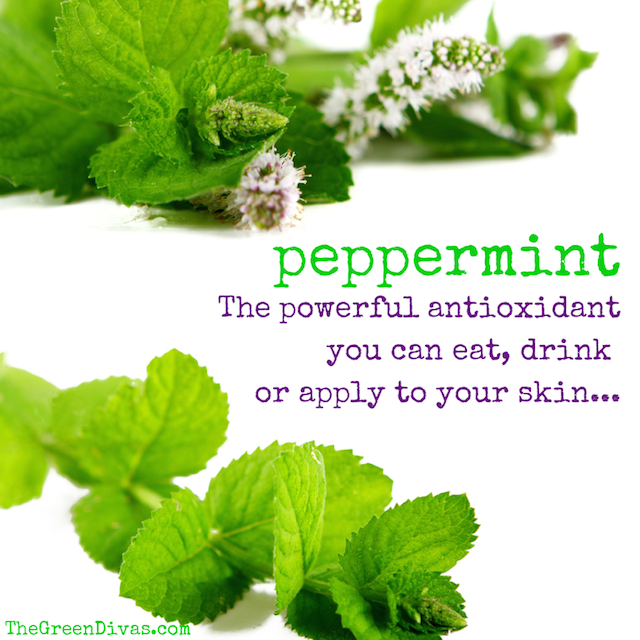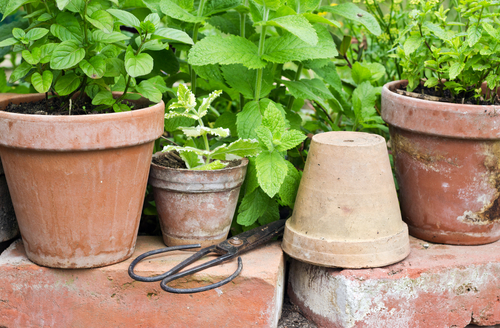Written by
Ever grown mint?
If you have, then you know it spreads and spreads, and if not contained can easily take over a bed or garden.
While my peppermint is contained, it is still… plentiful.
My CSA share each week also includes a healthy does of peppermint, spearmint, orange mint, chocolate mint… In a word, I am awash with mint.
Mint has been used since antiquity for medicinal, aromatic and culinary properties
So I’ve been thinking, other than delicious iced tea, how should I use all this mint? And just how healthy is it? Turns out this perennial herb has been used since antiquity for medicinal, aromatic and culinary properties. Ancient Egypt, Greek and Rome used mint as an herbal medicine thousands of years ago and dried peppermint leaves, carbon dated back to 1,000 BC, have even been found in Egyptian pyramids.
[dynamic-sidebar id=’Custom Widget 2′]
With 20+ varieties, spearmint and peppermint are the most commonly grown today. Peppermint is a good source of manganese, copper and vitamin C. Mint also contains vitamins and minerals including vitamins A, B-6, C, E, and K, beta carotene, folate and riboflavin and the minerals calcium, iron, potassium, magnesium and manganese.
Fresh mint is a powerful antioxidant. Peppermint, for example, contains perillyl alcohol, which might be helpful in stopping the spread of cancer, and rosmarinic acid, which can help prevent and treat some allergies. Mint contains the compound menthol, which is cooling when ingested, inhaled or applied to the skin.
Some of the many health benefits offered by eating or drinking mint include:
- Promotes digestion by activating digestive enzymes and salivary glands
- Soothes upset stomachs
- Treats and relieves pain caused by irritable bowel syndrome
- Helps lower blood pressure and regulate pulse
- Eliminates bad breath and fights cavity-causing bacteria in the mouth
- Helps with depression
Mint is also valued for treating a variety of conditions such as infantile colic, tuberculosis, shingles pain, breastfeeding pain and radiation damage.
Listen to this excellent Green Divas Health & Beauty segment—five great foods for awesome skin.
There are the potential risks to consider in using mint:
- Do not use mint in an attempt to soothe digestive issues if your symptoms are related to a gastroesophageal reflux disease, as it could worsen the condition.
- Use caution with mint products if you have or have had gallstones.
- Peppermint oil, if taken in large doses, can be toxic. Pure menthol should not be taken internally.
- Do not apply mint oil to the face of an infant or small child, as it may lead to spasms inhibiting breathing.
- Speak with your doctor to determine whether your medications could interact with mint or mint oil.
If you do not enjoy the potent flavor of mint, consider the many other uses for this easy to grow plant:
- Keeps your garden buzzing with beneficial insects, including honeybees
- Repels bugs like ants and flies
- Essential oil can be a room freshener and added to homemade cleaning products
- Keeps pets flea-free
- Helps with hiccups
- Peppermint steam helps fight infection and eases sinus congestion
- Essential oil applied to the temples relieves headaches
- Soothes aching feet and tired muscles
- Eases sunburn pain and discomfort from insect bites
- When inhaled, reduces nausea, including chemotherapy-induced nausea, and improves memory
So it seems to me that mint is the refreshing, plentiful gift that keeps on giving.


Green Diva Meg
August 5, 2014 at 8:08 pm
yes, i’ve grown mint, but the real question is if you’ve grown it, how do you contain it? i try to keep mine in a separate area or even large containers because it totally overtakes a garden. it’s a hearty herb to be sure . . .
Pingback: DIY Non-Toxic Bug Repellent That Really Works! | Care2 Healthy Living